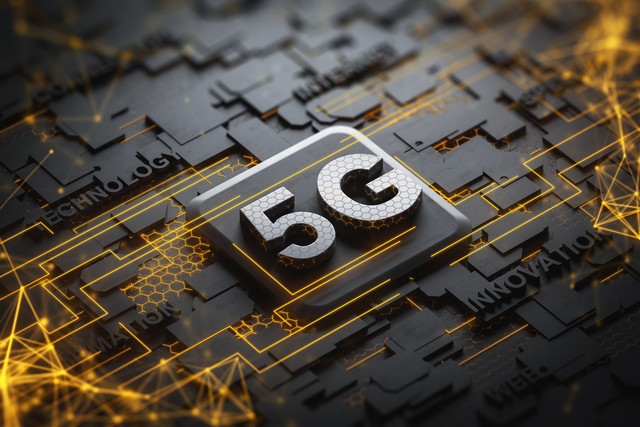November 29, 2023

5G network speed can be several times or even dozens of times that of 4GLTE, which is inseparable from various new technologies and standards behind it. The application of millimeter wave technology is undoubtedly the most critical link.qcm6490?
What is millimeter wave?
What exactly is millimeter wave? In fact, from the high school physics textbook, it is essentially a high-frequency electromagnetic wave, which is an electromagnetic wave with a wavelength of 1 ≤ 10 mm, usually with a frequency between 30 GHz-300 GHz. It is one of the main frequency bands for 5G communications.
5G communication in the main through the use of management of two network communication bands, Sub-6GHz is a low-frequency band, it can mainly use the three frequency bands below 6GHz information for teaching communication. Millimeter wave band then use 24GHz-100GHz high frequency millimeter wave technology for data communication. At present 5G for a millimeter wave utilization, most companies focus on 24GHz / 28GHz / 39GHz / 60GHz several different frequency bands in the development.
This concludes the millimeter wave briefing. Going back to the original question, what does increased network speed have to do with very high frequencies? Instead of referring to the original, difficult to understand technology, we will just give an example here so that we can understand it in a few minutes.
The root cause of network communication speed is actually the amount of data that can be received per unit of time. A communication base station and a cell phone are like the transmission of goods between two logistics stations. The goods are the data that needs to be transmitted. The electromagnetic waves connecting these two stations are like a highway,what is a distinguishing feature of 5g mmwave and the data transfer between them is like cargo on a truck.
By moving all the goods to the other end, we can increase the transportation capacity of the truck so that it can transport more goods at the same time, so that when the speed of the truck is fixed, the goods can be transported in a short period of time (the speed of the electromagnetic waves is fixed to the speed of light). In short, the idea is to increase the amount of data that can be carried in the electromagnetic waves of communication, increasing the efficiency of communication and speeding up the network.
Another way to achieve faster network speeds is to increase the number of lanes and the number of trucks that can pass, which means increasing bandwidth. It's not hard to understand that the more lanes there are, the more trucks and lorries that pass through per unit of time, which means that the more data is received per unit of time, the faster the network will be.
Well, the next main thing is a question about millimeter waves. Through the analysis for the above, we can easily find to conclude that the simplest and most brutal way to improve the rate of development of the enterprise network is in order to strengthen the work bandwidth. According to the principle of teaching communication technology, communication system signal frequency and its impact on the maximum bandwidth is directly proportional to the frequency of 5%, 28GHz millimeter wave, for example, its theoretical learning maximum bandwidth of 1.4GHz, compared with China's current 4GLTE used 800Mhz-2600MHz signal 100Mhz Compared with the bandwidth of 800Mhz-2600MHz signals currently used by China's 4GLTE, the bandwidth is inherently more than ten times of its own bandwidth gap.
Millimeter wave single carrier can reach 100mhz bandwidth.
Carrier aggregation technology can also increase bandwidth by integrating multiple carriers to achieve higher system bandwidth. However, the use of carrier aggregation is also limited by spectrum resources. In the current 4 GLTE spectrum resources, spectrum resources are very scarce, and China Mobile, as the mobile with the richest spectrum resources in China, only has 130 MHz spectrum resources. In contrast, millimeter wave spectrum resources are very rich and can be allocated to a wide range of operators, and even to many consecutive high-quality frequency bands.
High bandwidth, good resources and fast speed are the advantages of millimeter wave, and 5G millimeter wave as the fundamental reason for the carrier. Currently, millimeter wave technology is relatively mature, and Qualcomm has already shown us this in this regard. Using eight 100 MHz channels and a bandwidth of up to 800 MHz, network speeds are approaching 5 GB. it has been doubled compared to the maximum below 6 GHz.
5G networks are a complex network environment. millimeter waves are the most closed loop around the core experience. it exhibits speed limits but limited network signal coverage. bandwidth below -6 GHz allows for speed and signal coverage with balanced performance. Additionally, the Gigabit LTE network is essential in a 5G environment. It has the best signal coverage and ensures users won't have a bad cliff edge experience if they can't get 5G coverage.
Related articles:
The protagonist of wireless high-speed bandwidth millimeter wave
How millimeter waves can unleash the potential to hold up a 5G sky
It's not 5 g if it doesn't support very high frequencies? What the hell is millimeter wave?
Posted by: bufuze at
09:31 AM
| Comments (3)
| Add Comment
Post contains 868 words, total size 6 kb.
34 queries taking 0.299 seconds, 75 records returned.
Powered by Minx 1.1.6c-pink.









